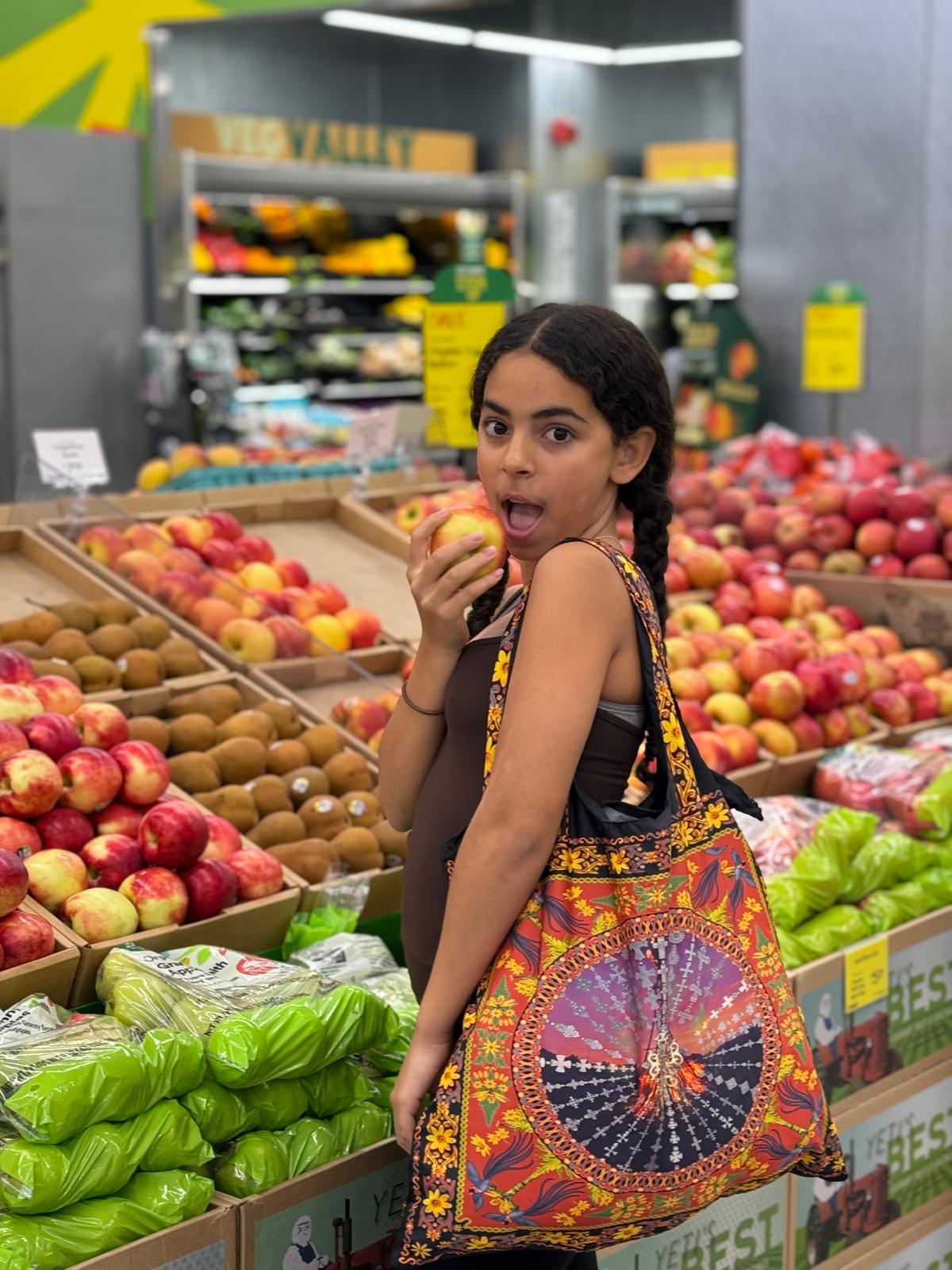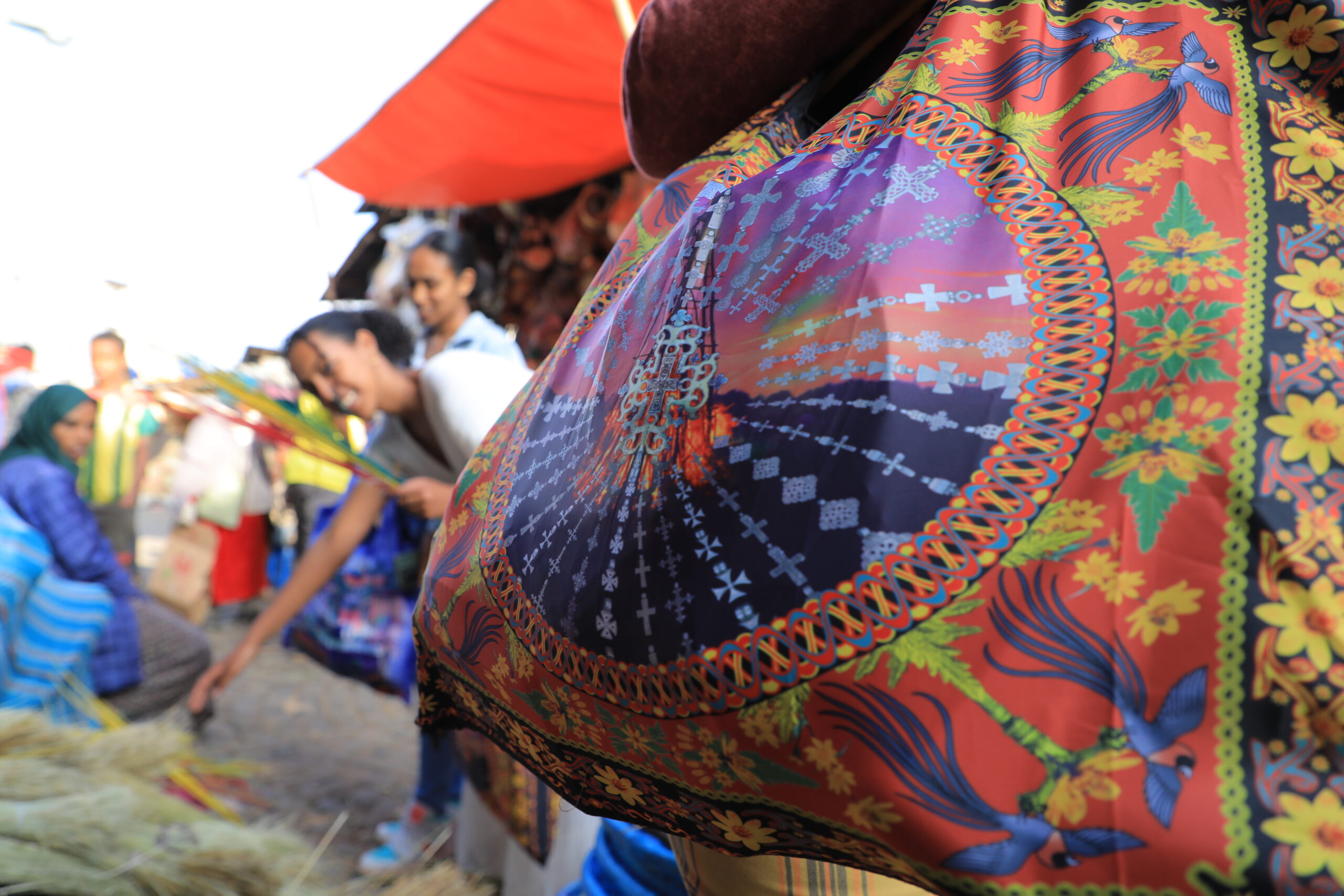Fashionably Ethiopian
Reusable Foldable Shopping Bags
Eco-friendly, Large Capacity, Durable
Made from 100% Recycled Plastic Bottles
Unique Ethiopian Heritage Design
In Support of Ethiopia’s Green Initiative
Eco-friendly, Large Capacity, Durable
Made from 100% Recycled Plastic Bottles
Unique Ethiopian Heritage Design
In Support of Ethiopia’s Green Initiative
New Arrivals
No products found
Design Insight: Meskel Demera bag
September marks the end of Ethiopia’s three-month long torrential monsoon rains. With that it inaugurates its new year (September 11) and spring time. It is a season filled with excitement and the high sprit of renewal and expectations of a new harvest and yet another round of celebrations, festivals, anticipated life moves and happenings. Nature pours out her wonderful bounties in prolific variety and abundance.
The land is everywhere decked with a kaleidoscope of blossoms filling the air with their enchanting fragrances of which the yellow daisy or Meskel Flower is the most visible and omnipresent. There is also a Meskel bird – the usually unremarkable gray fire-finch that grows special red and yellow plumage for the season. All this comes together in the feast of Meskel wherein culture and nature, history and the new year combine in a celebration that is unique to Ethiopia although its theme is common to all Christendom. The Meskel Festival commemorates the finding by Queen Helen, mother of the first Roman Christian Emperor Constantine – of the wooden cross on which Jesus was crucified.




Design Insight: Addis Ababa bag
Addis Ababa, the vibrant capital of Ethiopia, is a city steeped in history and culture. Situated on a lush plateau surrounded by rolling hills and majestic mountains, this dynamic city has served as Ethiopia’s heart since the late 19th century. The city was officially founded in 1887 when Empress Taitu, wife of Emperor Menilek II, convinced the emperor to build near the region’s natural hot springs. Empress Taitu named it Addis Ababa, meaning “New Flower,” reflecting the location’s beauty and significance.
Initially resembling more of a military camp than a developed city, Addis Ababa has transformed dramatically since 1887, growing into a hub of culture, politics, and architectural wonder.
Although the changes from the 1950s onward were significant, the most transformative developments have occurred in the last decade, propelled by the leadership of our current government, with ambitious urban development projects reshaping the city’s skyline and infrastructure.
The bag design captures the city’s initial modern buildings and monuments, which are an integral part of the city and interwoven into its fabric, offering a unique artistic portrayal of Addis Ababa’s iconic landmarks and historic buildings, paying homage to the city’s heritage. The intricate artwork captures the essence of Addis Ababa’s timeless charm, making the bag not just a fashion accessory but also a celebration of Addis Ababa’s remarkable history.



























